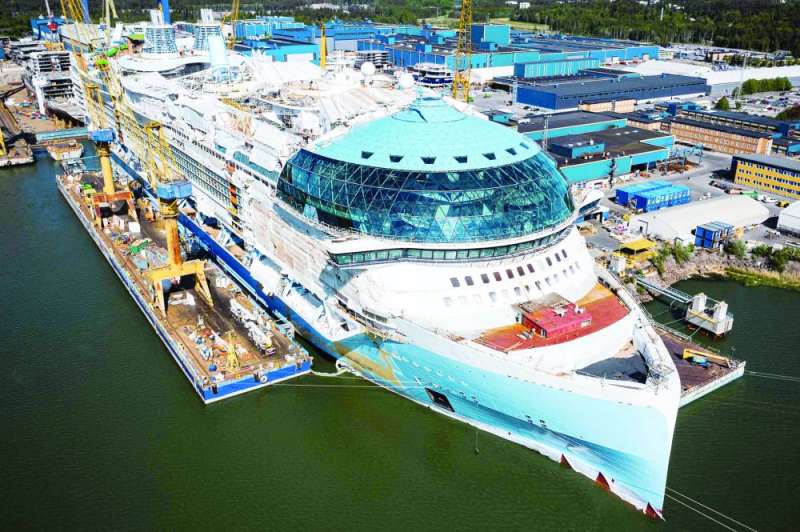The process of building the “Icon of the Seas”, the largest cruise ship according to its builders, which is scheduled to sail for the first time in January 2024, is nearing completion in the Finnish Turku Shipyard, despite accusations that it pollutes the environment.
The ship, which was ordered by the shipping company “Royal Caribbean”, looks like a small town, with seven swimming pools, a park, shops and an ice rink, reports Al-Rai daily.
The Icon of the Seas, whose total tonnage may reach 250,800 tons, five times the size of the Titanic, can carry nearly ten thousand people and will soon cruise the Caribbean Sea from Miami.
“This ship is by far, according to our information, the largest cruise ship in the world,” said Tim Meyer, chief executive of shipbuilder Turku Meyer.
While some criticize the huge ship because of its carbon footprint, others stand amazed by the advanced engineering of this floating tourist attraction, and there are those who have booked their tickets to travel on it.
The “Icon of the Seas”, whose construction began in 2021, features a giant glass dome covering its bow, and there are two other ships of the same size in Turku’s order book.
“Over the past decade, we have noticed that cruise ships have become larger,” said Alexis Papathanasis, a professor of cruise management at the University of Applied Sciences in Bremerhaven in Germany, explaining that “large ships have clear economic benefits,” because economies of scale, that is, cost advantages. Which companies get due to their volume of work, reduce the cost per passenger.
“If we follow that logic, we will build more cruise ships, but in smaller numbers,” said Constance Dykstra, a shipping specialist at the NGO Transport and Information.
“But that is not the case,” she added. We are seeing an increasing number of ships and they are larger than ever before.”
And while modern cruise ships are taking measures to reduce emissions through technology (the “Icon of the Seas” runs on liquefied natural gas), environmental activists are not convinced.
Dijkstra said that emissions of this gas are lower than emissions of conventional marine fuel, but “it has serious consequences for the climate because of the leakage of methane” resulting from it.

